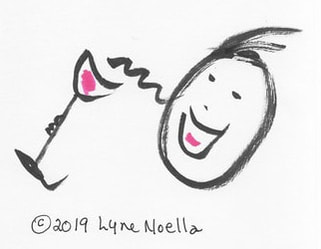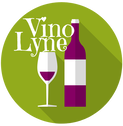 What is drinkability? My explanation is as follows: You bring the glass of wine to your lips. Your nose breathes in a kaleidoscope of fruity and earthy aromas. You take a drink and the beverage winds its way around your tongue like a river. You blink a few times in rapid succession. By this time, the pleasure center in your brain has lit up and is waving a flag that says, Hey, there’s something interesting going on here, pay attention. You sit up straight and take a second look at what’s in the glass. Your mind dims the sights, sounds and cares of your everyday life, giving the wine center stage. Your nose, tongue and mouth further explore the wine and you take a trip through a field of aromas and an ocean of flavors and sensations. This wine can be bold or shy or showy or mysterious, like some people you know. Provocative even. The point is, It’s delicious! Over the next hour or two or three, new layers of flavor, aroma and mouthfeel make themselves known as you and a friend consume the bottle. Your body relaxes and you just give in to the sensations. You find yourself thinking, Wow . . . I don’t want this to end. You glance over to your drinking partner’s glass. What is her pace of consumption? Does she love the wine as much as you do? If not, maybe there’s more for you. At some point the last drop has been poured and swallowed. But the flavor lingers like the caress of a lover’s touch. And you are as happy as a gambler who has won every single poker chip in the casino. Wouldn’t it be a wonderful world if every bottle of wine we bought delivered this kind of drinkability? If that happened, nothing would get done. We’d all be too busy drinking and congratulating one another over our fine luck. What usually happens is that we find ourselves putting down the glass at some point before reaching the end of the bottle. Why? Because we have had enough of that particular wine. We don’t even have to have a reason. We just know. Because that’s what our palate is telling us. Let me give you an example. You take a drink of a Cabernet Sauvignon from Napa Valley in California. Your brain is wired to appreciate some level of sweetness in any liquid, so your first drink of the wine may indeed light up the pleasure centers of your brain. However, too much of a good thing, such as the sugar level in the wine, may wear thin after a few swallows. You put down the glass and move on to something else. That particular wine has failed to pass the drinkability test. You don’t give up on wines from Napa Valley, however, because you have been informed that many wines from that region have drinkability in spades. You just have not found your special wine today. More often than I wish was the case, a particular wine does not hold my attention. Like a wallflower, the wine goes ignored while I enjoy the conversation with my drinking partner. I might even forget the glass is on the table. Drinkability? Nope. Have you ever had a wine that grew worse with every sip? That’s the opposite of drinkability. If the wine does not satisfy, is off-putting, or does not factor into your thought process at all, it is a signal to put down the glass. Don’t make the mistake of continuing to drink in hopes of finding satisfaction. You will only succeed in filling your body with ethyl alcohol. And that can’t end well. There is no point in drinking a wine without a personality. It doesn’t have to be the most wonderful wine you have ever tasted. It just needs to hold your attention, like a car mechanic with a large hook nose telling a fascinating story. You are drawn in by the mechanic’s story but a bit perplexed by his odd nose. In fact, you stare at the nose but your attention soon turns to his story because it’s a good one. That’s fine. Celebrate the unusual, in people and in wines. Drinkability means you love what you are drinking and you wish it would never end. Do not confuse drinkability with how quickly you drink. A serious Bordeaux blend from the commune of Margaux will not go down like a rosé from Provence, France. Yet, both regions offer very drinkable wines. As with people, each wine has something to say. Allow the wine to set the pace. If it’s a big wine with a lot of body, chew on it like a meaty bone. If it’s a frilly rosé, just let it glide along your tongue like water runs through a shady creek on a crisp spring morning. One of these wines is perfect for a hot summer afternoon when you’re out grilling. The other is just the thing when you are pondering the meaning of life with your best friend over a prime rib dinner. When you identify drinkability, slow down and savor each drop. Why put a quick end to something good? Think about what the wine is telling you and live for the moment. Breathe. If you want to expand your knowledge of the world of wine, drinkability is a concept that will always be a guest at your table. This article is an excerpt from my upcoming book on how to get to know and fall in love with a bottle of wine. Stay tuned for updates on the book, which will be published this fall. -- Lyne Noella
0 Comments
|
AuthorLyne Noella Archives
October 2022
Categories
All
|


 RSS Feed
RSS Feed
